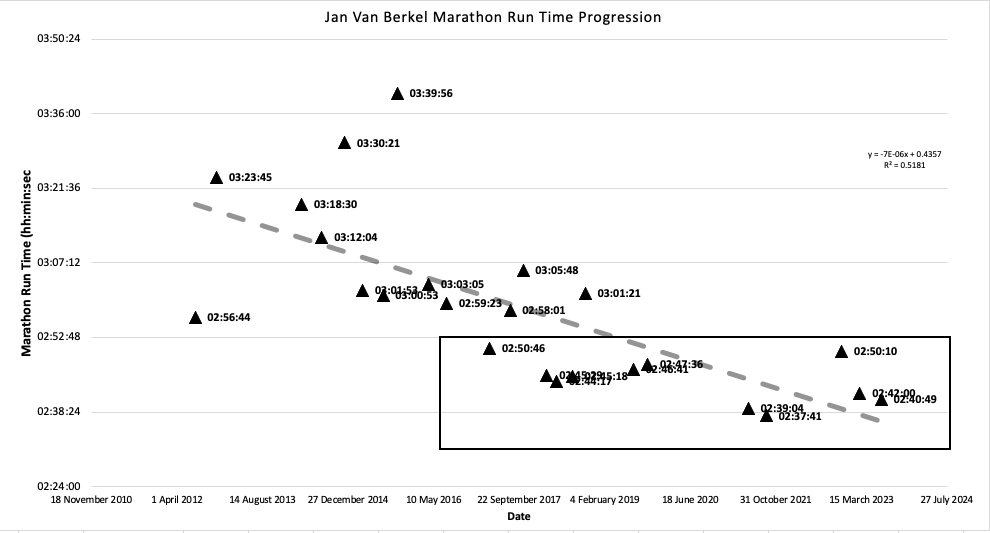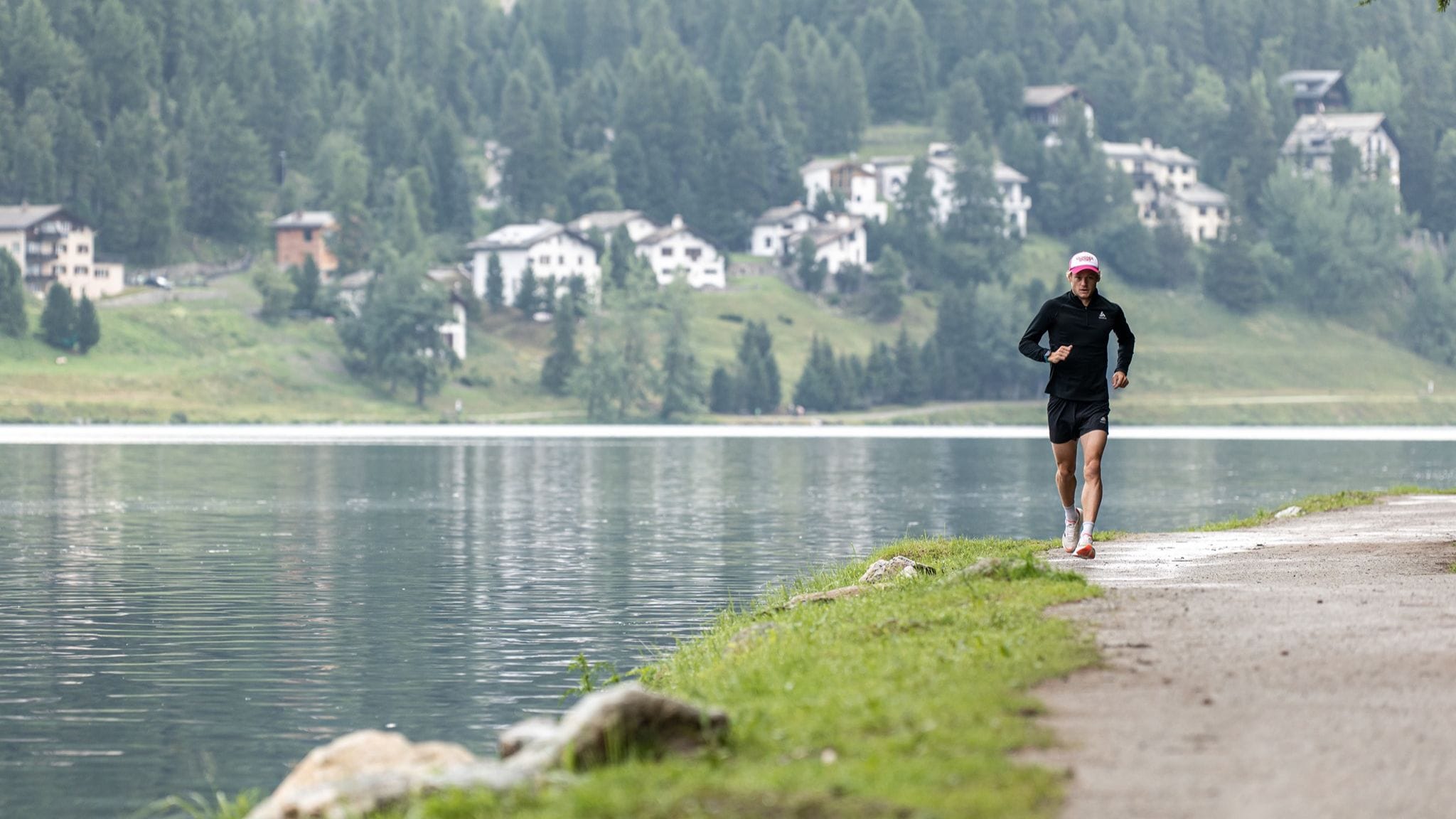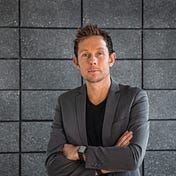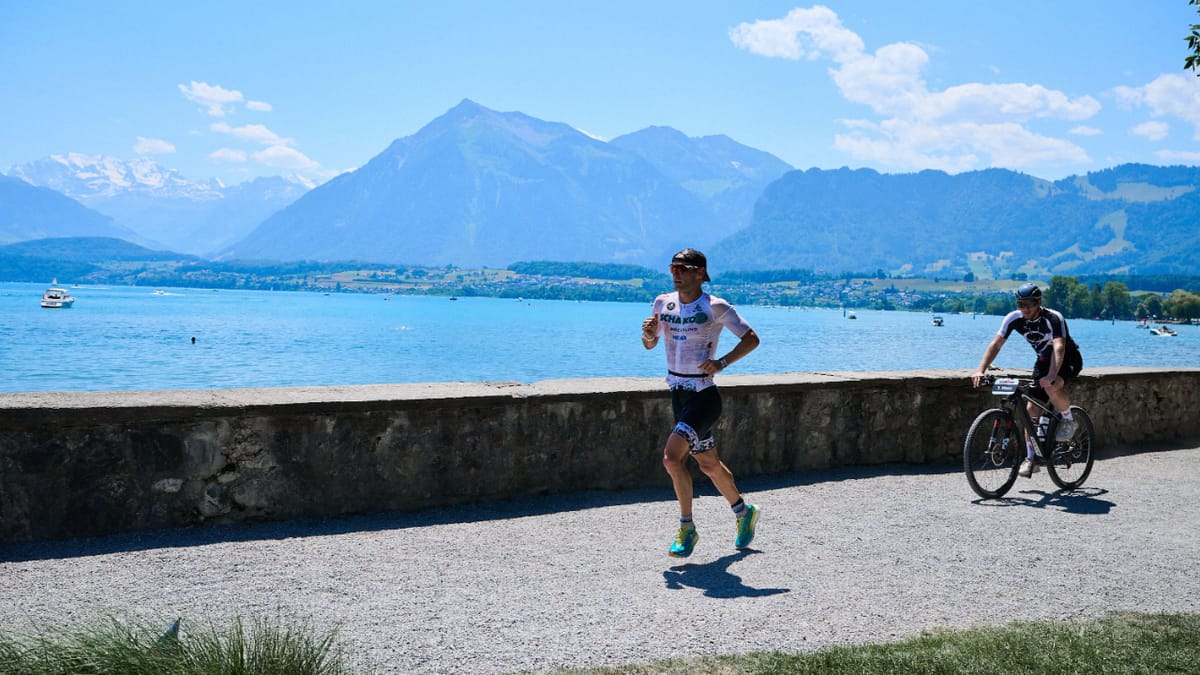On 9th July, 2023, Jan van Berkel, also known as "The Berklizer," triumphantly crossed the finish line at Ironman Switzerland, claiming 1st place. This race marked his final appearance as a professional triathlete, and as a coach, I can confidently say that witnessing this moment was one of the most emotional experiences I've ever had. From the exhilaration of his 4th race victory to the poignancy of concluding an almost 8-year coaching partnership, the range of emotions was remarkable. Coaches understand that, next to family, the professional athletes we guide hold a significant place in our daily lives. Jan had evolved into not just an athlete I work with professionally, but a close friend. The thought of the daily interactions coming to an end was a strange feeling, although true friendships are enduring.
My collaboration with Jan began during my tenure with Rowing New Zealand as the Head of Performance Physiology. The connection emerged after Eric Murray, a 2-time Olympic Gold Medalist in Men’s Pair rowing, tweeted about our collaborative efforts leading up to the 2016 Rio Olympics. A mutual friend of Jan's from the rowing world forwarded him the tweet, suggesting, "You should talk to this guy; he's also into Ironman triathlon." What initially began as nutritional guidance evolved into a full coaching relationship. At the time, Jan struggled to break the 3-hour mark in the marathon segment of an Ironman event, despite his impressive running background. His performance consistently faltered around the halfway point, a misalignment with his evident capability. Jan believed that altering his metabolism through dietary and training modifications could hold the answer, and indeed, it did. The first sign of progress materialised at Ironman South Africa in 2017, where he achieved a 6-minute personal best in the marathon, completing it in just under 2 hours and 50 minutes—an exceptionally speedy time for that era.
Jan's running progression from 2012 to 2023 is depicted in Figure 1. His marathon times steadily improved over this 8-year span, showcasing a methodical and systematic trajectory.

The improvement wasn't the result of dramatic, miraculous leaps. Instead, it was a product of consistent training and adherence to well-tailored regimens designed to enhance his capacity for specifcally running after the cycling segment of an Ironman race. Initially described as a "B-Grade pro" by another coach, Jan's transformation was anything but.
His accomplishments include an 11th-place finish in Kona, a 2nd-place finish in the fiercely competitive Ironman Tulsa, and an impressive 4 victories at Ironman Switzerland. He established himself as one of the premier Ironman marathon runners on the professional circuit. Commentators during the Ironman Switzerland 2023 coverage aptly noted, "You wouldn't want Jan van Berkel just one minute behind you with 15 km remaining in a marathon." Their observation was validated; his exceptional finishing speed, or rather lack of decline, marked his forte as an athlete.
Consequently, what factors have contributed to Jan's remarkable progress in marathon running over the past 8 years? In this blog, we will both provide my perspectives as a coach, as well as Jan's insights as an athlete.
Without question, Jan's personal best times in standalone marathons aren't astonishing (sorry Jan! ☺). Many athletes with significantly quicker personal bests in running outpace him. Nevertheless, my recurring mantra for Ironman competition is not how swiftly one completes it, but how effortlessly. To achieve this, the training regimen plays a pivotal role. So lets’ look at 6 of the most important ones now.
The Fundamentals of Jan van Berkel's Run Training
- Consistency
Coach Dan: From my standpoint as a coach, when I emphasise consistency, I'm not solely referring to maintaining a lack of injuries and consistently engaging in running. While these aspects are undoubtedly essential (and universally acknowledged), it's worth jesting that Jan seemed as robust as a packhorse!
Astonishingly, he disregarded strength and conditioning, avoided stretching, never consulted a physiotherapist, and rarely suffered injuries. Different individuals possess varying constitutions! The consistency I emphasise here pertains to the structured programming we employed. Each build-up to his Ironman races exhibited subtle deviations rather than radical reconfigurations. The aim was to fine-tune key sessions that had proven effective for him. This might come across as mundane, but the importance of systematic progress and tracking advancement cannot be overstated.
Jan's Perspective: The repetitive nature of each Ironman build instilled a lot of confidence in me. I knew that I could trust my marathon performance since we weren't blindly copying past approaches. Instead, we made small adjustments to adapt, such as incorporating more aggressive running tactics in recent years. I had faith in the plan's efficacy, especially when coupled with self-care. I was confident that if I took care of myself well, I would likely be in excellent shape on race day. This assurance motivated me to persevere through challenging moments.
Disregarding practices like massage, regular physiotherapy, or stretching did bring some skepticism from those around me. Nevertheless, I placed a strong emphasis on sleep and good nutrition. I also integrated elements like running in barefoot shoes or on grass periodically. Looking back, I recognize that I should have had the confidence earlier on to dismiss the conventional practices "athletes do." Instead, I should have focused on what truly resonated with me and what I believed worked effectively.
- Embrace Your Strengths
Coach Dan: Jan possesses innate physical strength. This inclination is apparent in his preference for lower cadences during cycling and a markedly faster swimming when he used his dustbin lid sized paddles! Our training strategy involved harnessing this natural strength. This meant deliberately seeking hilly terrain for endurance workouts and incorporating undulating tempo runs into pivotal training phases.
If Jan thrived while running uphill and on hilly terrain, he would flourish during the marathon segment of an Ironman event. This concept encompassed the training impact of both concentric strength gained from uphill running and eccentric loading derived from rapid downhill running. This comprehensive approach toughened his legs to withstand the inevitable quadriceps muscle damage during the final stages of a marathon.
Jan's Perspective: I thoroughly enjoyed hilly running, and I believe it's significantly underrated. Strength eventually translates into speed. I sought out routes that completely challenged my legs, repeated them persistently, and eventually reached a point where I could run for 2.5 hours with minimal muscle soreness the following day. If you want an opinion on the effectiveness of my standard long run loop, just ask Chelsea Sodaro... :)
- Running After Cycling
Coach Dan: I hold a firm conviction that triathletes should engage in running after cycling, a standpoint that often sparks debates among coaches. Contrary to prevailing notions and as we published, metabolism remains relatively stable during the run following cycling, regardless of carbohydrate intake. This metabolic constancy endures after around 90 minutes of exercise, rendering carbohydrate consumption ineffective in blunting fat metabolism.
This principle of specificity can be consistently upheld, primarily through the effect exercise duration has on metabolism (fat oxidation increases with increasing exercise duration). Consequently, Jan's high-quality runs predominantly followed cycling sessions, averaging at least 2 such sessions weekly. The "Specific Adaptation to Imposed Demands" (SAID) principle, a cherished training doctrine, underscores the necessity of running off the bike to excel in this aspect during competition.
Jan's Perspective: This was one of the strategies I employed because of its effectiveness, even though I didn't particularly enjoy it. Under Dan's guidance, running at a high speed while feeling fresh was a rarity for me, except perhaps for some fast 200-meter sprints. As a result, I reached a point where I could hardly differentiate the impact of preceding cycling before a run. I had become accustomed to this approach and didn't know any different. However, it took some time for me to acknowledge that targeted, specific running held more value than extensive standalone running sessions.
- Metabolism Matters
Coach Dan: It’s likely not news to anyone, that as a coach, I always emphasize the pivotal role of metabolism, a domain where Jan's notoriety as "The KetoCop" is well-deserved. I have previously expounded on Jan's low-carb diet, exploring its impact on both health and performance. A more comprehensive understanding can be gleaned from those writings. Throughout our coaching journey, elevating Jan's fat metabolism to exceptional levels proved beneficial, as it preserved his endogenous carbohydrate reserves.
This perpetuated his energy and resilience during the marathon's latter stages. Although Jan fueled with carbohydrates during races, many training sessions deliberately restricted carbohydrate intake. His diet also featured a periodized distribution of carbohydrates centered around training, but also generally lower in carbohydrates habitually. With almost 8 years of consistent commitment, Jan mastered this approach, optimizing its impact on training, racing, and recovery. During our partnership, Jan's carbohydrate requirement during cycling reduced by 17- 20 gels during the boke leg alone. This transformation eliminated the risk of inexcusable metabolic failures (e.g., bonking).
Furthermore, his consistent performance stemmed from reduced reliance on large carbohydrate quantities during races. This consistency is exemplified by the clustering of annual marathon times from 2018 to 2023, as depicted in Figure 1.
Jan's Perspective: All I can express regarding my approach to metabolism is that I encountered numerous individuals who insisted it wouldn't be effective. I continue to encounter people who predict dire outcomes like malnutrition-related health issues in the years ahead. To counter their concerns, I can confidently present my race results spanning the past 8 years, which encompass four victories at Ironman Switzerland. These outcomes conclusively end any further debate. The strategy undeniably works. Period.
- VO2max Running
Coach Dan: Jan seldom hit the running track for speed work or VO2max training. Most of his high-quality running throughout the year was composed of tempo runs (ranging between LT1 and LT2) and some strides at the end of runs (e.g., 40 minutes with 5 x 20 seconds at <3 min/km). However, we strategically reserved the more intensive VO2max running sessions for just before competitions.
These sessions included workouts like 8 x 1 km with 200 meters of jogging recovery and 10 x 800 with 200 meters of jogging recovery. Recognising the importance of maintaining a high VO2max, even for an endurance event like an Ironman, we also believed that it positively impacted his running economy and efficiency. By saving these sessions for the final build-up, we not only mitigated injury risks but also ensured a last-minute boost to his running performance just before race day.
Jan's Perspective: I found it particularly intriguing to observe that the paces for 1k and 800m repetitions didn't deteriorate as the years progressed. This was especially notable considering our infrequent engagement in these sessions and the fact that our training practices might conventionally be perceived as factors that would hinder my performance in them – such as incorporating hills, engaging in extended low-carb running, and adopting a seemingly "sluggish" running style after cycling.
Remarkably, I maintained a 3.00 pace for the 1k repetitions despite not focusing on speed work. This experience led me to believe that these high-intensity sessions hold a disproportionately large role in both age group and professional training schedules.
- Slow Running Leads to Speed
Coach Dan: During his endurance runs, Jan consistently maintained a controlled pace, typically between 4:30 to 5 minutes per kilometer. This deliberate "pedestrian pace" might seem counterintuitive for an athlete capable of running a marathon in under 2 hours and 40 minutes, especially after cycling. Additionally, Jan adhered methodically to the prescribed paces in his training program—never faster or slower. I recall a moment when Jan was training alongside Javier Gomez in Sierra Nevada, and Javier expressed disbelief at how slowly Jan ran during his long runs, given his race pace.
This approach not only facilitated consistent weekly mileage but also maintained a sense of balance. His weekly running mileage averaged between 75 to 110 kilometers. As an illustration, during his preparation for IM Switzerland 2023 (8 to 5 weeks prior), he completed three consecutive weeks of 110-kilometer runs. This underscores the significance of unwavering consistency, a principle that should never be underestimated. Furthermore, it's crucial to adhere to the plan and remember that tomorrow is another opportunity.
Jan's Perspective: I thoroughly enjoyed hilly running, and I believe it's vastly underrated, especially in today's era of Strava where everyone, including numerous professionals, tends to focus on showcasing sessions with attractive average paces. A quick look at my Strava profile will reveal numerous runs recorded at a 5:00/km pace or even slower.
In contrast to many age group athletes, my training averages are likely slower, yet my marathon time is likely 30 minutes faster. I permitted myself to run based on intuition, adapting to the intensity that felt right on any given day, rather than rigidly adhering to specific numerical targets. While I wore a watch and HR strap for most of my endurance runs, I refrained from scrutinizing the metrics during the runs. On certain days, my usual 1-hour loop took 1 hour and 5 minutes, while on others, it clocked in at 55 minutes.
My concern was primarily retrospective; at the time, I trusted my instincts and allowed my performance to unfold organically. This innate sense became so refined that I developed a much more adaptable approach to gauging my running pace during races, focusing less on the GPS on my wrist. This, in turn, significantly boosted my confidence.
Concluding Remarks
Coach Dan: Personally, what I find most gratifying about coaching Jan is that it highlights the fact that improvement is a gradual process, rather than an instantaneous result. It's a journey marked by unwavering consistency that ultimately yields outcomes. Through our coach-athlete relationship, both Jan and I have evolved together, refining our approach to consistently enhance performance. While this blog primarily delves into running, the same approach was adopted for cycling and swimming. The allure of Ironman running lies in its specificity, demanding distinct treatment compared to merely pursuing a fast marathon. This specificity allows good runners to transcend into greatness, often transforming weaknesses into strengths. In essence, the key is to execute the appropriate training, maintain focus on the process, and save the heroics for race day.
Jan's Perspective: My recent years working with Dan serve as a prime illustration of an approach that might not appear glamorous but is undeniably effective. Our emphasis was on proven strategies, while disregarding passing fads, yet maintaining a receptiveness to innovation. In our sport, consistent and dedicated effort over time is rewarded. With self-belief and a commitment to personal development, success is an inevitable outcome.








